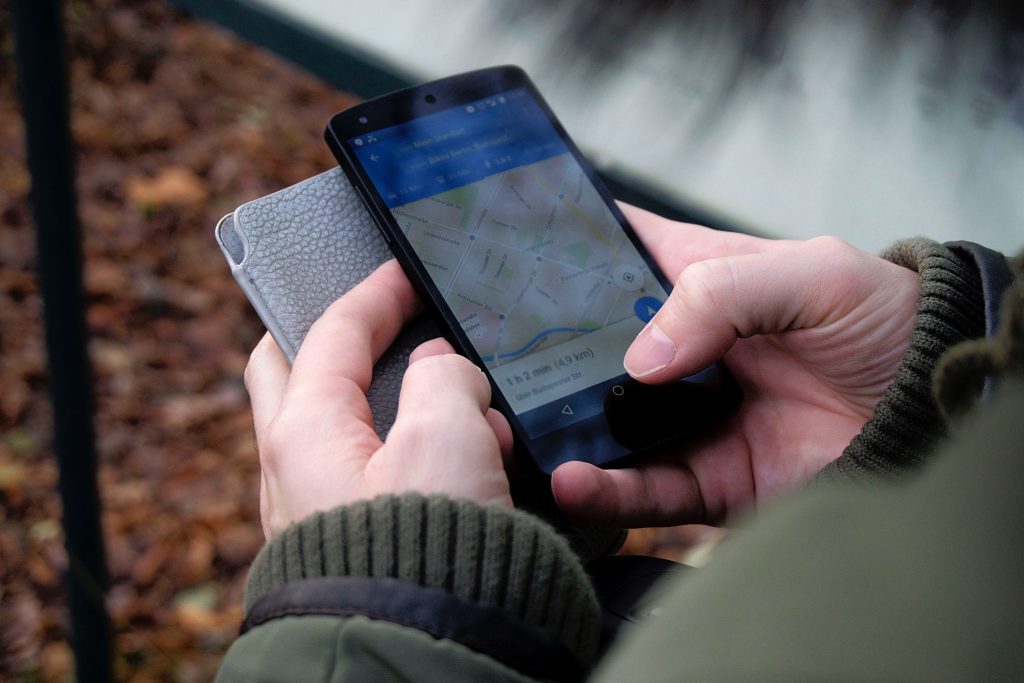I love maps. As a child, I would sprawl out on my our scratchy oriental rug and study our atlases and globe. With my finger, I would trace interstate and highway routes through cities and small towns, from Atlantic to Pacific and Gulf Coast to Canada.
I remember when Mapquest replaced map-reading from getting from one place to another. When my friend and I drove from Nashville to Wilmore, Kentucky to visit Asbury Seminary, we used printed turn-by-turn directions. Now, I use Google Maps.
Maps, Mapquest, Google Maps—each of these navigation devices helps us get to our destination, and each generation of navigation technology offers us more specifics about our journey. I began using the approximate distance between two points (scale and ruler, anyone?) and multiplying it by our ideal speed to estimate the general time of arrival. Now, my GPS app does the math for me, adjusts for traffic, and recalculates my arrival time to the minute after every stop for Starbucks or Chick-fil-A.
But using each of these tools requires some specificity, some clarity on my part about my destination. Google Maps cannot give me directions to Eastern Kansas, so I enter a more specific location: Overland Park, KS. Even then, Google Maps assumes I want somewhere around 83rd and Metcalf when I intend to go to 135th and Nall. I have a specific destination in mind.
When it comes to my calling, I seldom have that sort of clarity about the destination. As a result, I can flounder when I do not know which way to go, what step to take. I feel akin to Abraham in that regard. God told him, “Go to the place I will show you” (Gen 12:1). In other words, “Pack up and go. I will let you know when you have arrived.” The fact that Abraham obeyed the LORD and went astounds me. I would have needed a little more direction.
Then, a few months ago, I discovered that Abraham did have a little direction. At the end of Genesis 11, we read this:
Terah took his son Abram, his grandson Lot son of Haran, and his daughter-in-law Sarai, the wife of his son Abram, and together they set out from Ur of the Chaldeans to go to Canaan. But when they came to Harran, they settled there. (Genesis 11:31)
Abram and his extended family had already been aimed at Canaan. They intended to go there, but they settled in Harran. When I read this, it made sense to me that Abraham would naturally continue heading toward Canaan. That destination had already been plugged into his internal GPS.
He probably did not have any sort of technology to tell him precisely how to get there and whether or not there would be an oasis or lame camel over the next dune. However, with whatever means he had available, he intended on getting to Canaan. Whether or not he had some foreknowledge that Canaan was the Promised Land, the Bible does not tell us. Even with no clarity about his final destination, Abraham continued his family’s journey to their original intended destination.
For me, clarity about my calling has been rather elusive. All I can discern is Eastern Kansas when I crave to know cross streets. But I have enough direction to get going. I have enough to step out and move forward in the direction I sense Him to be leading, even when I do not have all of my questions answered. This is the essence of faith.
The intentions I set for 2018 aim at the sense of calling I have. They aim at a certain type of life I feel called to live—a life I believe to align with the values and priorities of the Kingdom of God. They aim at a type of contribution I sense God wants me to make with my skills, training, and knowledge.
My four intentions: FLYWHEEL, INQUIRE, WRITE, and WALL keep me headed in a certain direction. And the Post-It note on which they are written reminds me, even now, that the intentions cannot stay on paper or in my head. I have to get moving.
This post is the second in a series on intentions. You can read the first post here.
